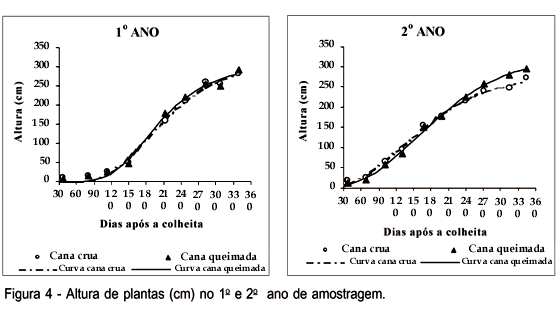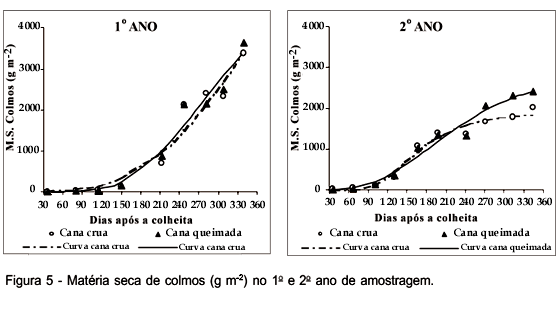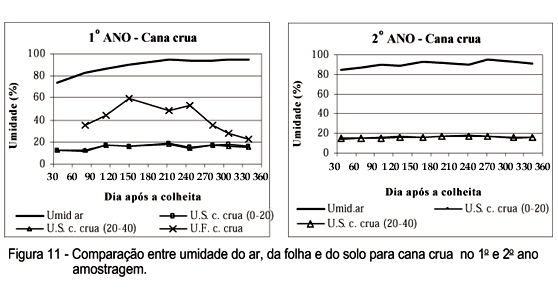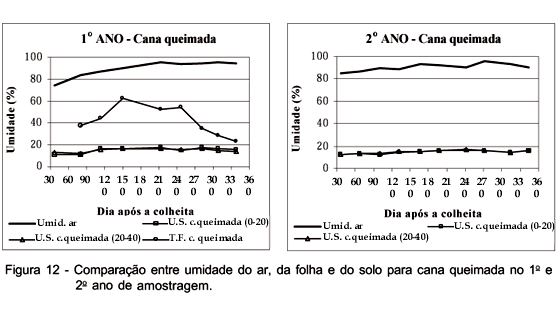This work had as objectives: 1. to compare the shoot growth between green cane, mechanically harvested and burned cane, harvested manually; 2. to evaluate the influence of the weather on the two conditions of growth and 3. to analyze the growth of green cane and cane burned in the 1st and 2nd years of second ratoon cane crop, by means of adapted curves. The research was performed in Morro Agudo, SP, Brazil from July 1995 to July 1997. The cultivar was the SP 70 -1143. As growth indicators the following biometric indexes were used: number of tillers, number of leaves, dry matter of stalks, and leaves and leaf area index (LAI). For each treatment, 4 areas were used, each one being considered a replication. Polynomial regression and non-linear regression were used to adjust the data to the growth curves. The growth in the first cycle was similar for the green and the burned canes. At the beginning of the second cycle the green cane growth was greater, while at the end, the growth was greater for the burned cane. Tillering of the green cane did not present significant differences that confirm the negative influence of the straw in the ratoon cane crop. The climatological factors, separately, did not promote changes in the growth cycles, that could identify a general tendency. The differences in the development expressed on the curve of growth from the 1st to the 2nd year are due to the climatological factors, for both, the green and the burned cane.
sugarcane; ecophysiology; burned; environmental impact












